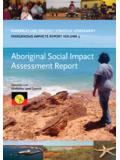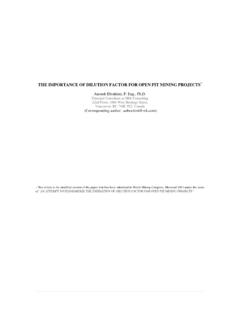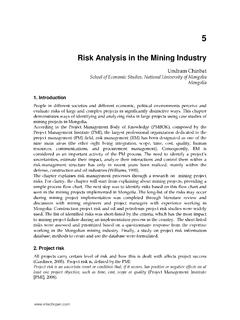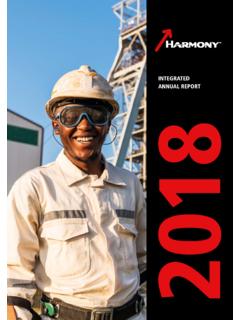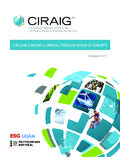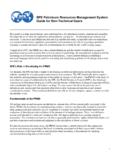Transcription of International Association for Impact Assessment
1 International Association for Impact AssessmentPrincipal author: Frank Vanclay, University of GroningenContributing authors: Ana Maria Esteves, Community Insights Group Ilse Aucamp, Equispectives Research & Consulting Services Daniel M. Franks, University of QueenslandApril 2015wPurpose and intended readershipThe purpose of this Guidance Note is to provide advice to various stakeholders about what is expected in good practice social Impact Assessment (SIA) and social Impact management processes, especially in relation to project development. Project development refers to dams, mines, oil and gas drilling, factories, ports, airports, pipelines, electricity transmission corridors, roads, railway lines and other infrastructure including large-scale agriculture, forestry and aquaculture projects. This Guidance Note builds on IAIA s (2003) International Principles for Social Impact Assessment .
2 While the International Principles outline the overarching understandings of the SIA field, including the expected values of the profession, this document seeks to provide advice on good practice in the undertaking and appraisal of SIAs and the adaptive management of projects to address the social issues. As a statement of good and sometimes leading practice, not all the information in this document will necessarily be applicable in every situation people utilising this information will need to establish for themselves what is appropriate in each particular of people made contributions to the discussions at conferences of the International Association for Impact Assessment and elsewhere that have been incorporated into this document. Some people deserve special mention because of their particularly significant contribution, including: San-Marie Aucamp, James Baines, Hilda Bezuidenhout, Eelco de Groot, Damien Eagling, Gabriela Factor, Cornelia Flora, Nora G tzmann, Philippe Hanna, Angelo Imperiale, Deanna Kemp, Ivo Louren o, Lucy McCombes, Behrooz Morvaridi, Ciaran O Faircheallaigh, Marielle Rowan, Helen Russell, Rauno Sairinen, Arn Sauer, Frank Seier, Eddie Smyth, Mike Steyn, Nick Taylor, Lidewij van der Ploeg, Francesca Viliani, and Jorge intended users of this document include: SIA Practitioners/Consultants who want to know how their practice compares with International best practice; Project Developers/Proponents (private sector or government) to assist them in evaluating SIA consultants and in knowing what to expect from consultants.
3 Regulatory agencies in terms of judging the quality and acceptability of SIA reports and in determining what procedures and expectations will be; Social specialists in the Multilateral Development Banks (MDBs), such as the World Bank, the International Finance Corporation (IFC), the Asian Development Bank (ADB), the African Development Bank (AfDB), European Bank of Reconstruction and Development (EBRD), the European Investment Bank (EIB), and the Inter-American Development Bank (IDB); Social staff in other financial institutions, especially Equator Principles banks; Development cooperation agencies; Government planning agencies; Communities and local peoples; Civil society organizations; People responsible for SIA regulatory for assessing and managing the social impacts of projectsGuidance for assessing and managing the social impacts of projectsiiReindeer herding brigade number 4, Yar Sale municipal farm, South Yamal Peninsula, April 2012, Photo taken by Florian Stammler, Arctic Centre, University of Lapland.
4 Used with permissionSeveral times a week, before the journey to the next campsite, the families in each brigade of nomadic herders round up their reindeer and choose the ones they will use to pull the sledges with their household items. It is each sledge driver s responsibility to choose the animals they document provides general guidance about what the International Association for Impact Assessment (IAIA) considers to be current good practice in social Impact Assessment at the time of publication. It is provided only as a general public service to the professional community and does not constitute the provision of legal or technical advice. Since jurisdictions vary greatly in their laws and requirements, practitioners will always need to confirm the expectations in any context in which they work. Reference to any company or corporation in this document does not necessarily constitute endorsement or support.
5 IAIA accepts no liability for errors or omissions, or for any consequences that may come from following this the cover photoGuidance for assessing and managing the social impacts of projectsiiiAbout the authorsProf Frank Vanclay, who is Australian by birth, is now professor of cultural geography in the Faculty of Spatial Sciences at the University of Groningen, the Netherlands. Growing up in north-eastern Australia in a region undergoing rapid development led him to have a life-long interest in social Impact Assessment and the governance of development. Although a career academic, his strong interest in applied social research and a commitment to the social relevance of academic research has meant he has been frequently engaged to be advisor on social issues generally and especially on social Impact Assessment for a wide range of organisations, including the World Commission of Dams, the World Bank, government agencies in many countries, and various International NGOs and industry organisations.
6 He has been a visiting professor at the University of Eastern Finland and the University of Sao Paulo. He has been associated with IAIA for over 25 years, holding many leadership positions, for example, he is the current Chair of the Editorial Board of IAIA s journal, Impact Assessment & Project Appraisal. He is the author of many of the key documents in the field of social Impact Assessment , and was the 2014 recipient of IAIA s individual award acknowledging his personal contribution to advancing the theory and practice of the discipline of social Impact Assessment . E-mail: Ana Maria Esteves, who is Mozambican by birth but now resident in the Netherlands, has had a long term interest in the topic of how the extractives sector can contribute to social development. She established the social performance consulting firm, Community Insights Group, in 2002. Ana Maria and CIG have provided support in the areas of social performance and local content to many global resources companies such as Shell, BG, Tullow Oil, Anglo American, Rio Tinto and BHP Billiton, in all regions of the world.
7 Although primarily a practitioner, she has published widely on social Impact Assessment and local content issues, and is a visiting Professor in the Department of Civil and Environmental Engineering at the University of Strathclyde in Glasgow, Scotland. She will be President of IAIA in 2016-2017, having previously served in many leadership roles in IAIA. She founded and manages SIAhub ( ), an online platform for SIA practitioners. Ilse Aucamp is South African by birth. Working as an SIA practitioner, she is a qualified social worker with a masters degree in environmental management, and has just completed her DPhil degree on how SIA can be used as a tool for social development. She is a director of Equispectives Research and Consulting Services, a firm specialising in social research and the social aspects of environmental management. Ilse has mainly worked in Africa and has conducted more than 100 SIA studies during her career, including for many mining and large infrastructure projects.
8 She has also been involved in the long term monitoring of social aspects during project implementation. She teaches SIA at a post graduate level at a number of South African universities. Her involvement with IAIA includes being a member of the National Executive Committee of IAIA South Africa and being a past-chair of the SIA section of IAIA International . Ilse is on the advisory panel of the Centre for Environmental Rights, a NGO in South Africa specialising in social and environmental justice. She finds working with grassroots communities the most rewarding aspect of SIA. E-mail: Daniel Franks, who is Australian by birth, is Deputy Director at the Centre for Social Responsibility in Mining at The University of Queensland s Sustainable Minerals Institute. With a background in geology, policy and social sciences, his research and practice is focussed on the sustainability challenges of mining and energy development.
9 He has served as Co-Chair of the SIA section of IAIA since 2011 and is a member of the Good Governance of Extractive and Land Resources Thematic Group of the United Nations Sustainable Development Solutions Network. He has published widely in the academic literature and has undertaken research for organisations including: UNDP, The World Bank, Oxfam, the Ford Foundation, Greenpeace, the Australian Agency for International Development, the International Council on Mining and Metals and most of the major mining companies. He has been a visiting lecturer at the Universidad Cat lica del Norte, Chile; Columbia University, New York; the University of Eastern Finland; and the University of Western Australia. E-mail: for assessing and managing the social impacts of projectsivKey points of this guidance documentSocial Impact Assessment (SIA) is now conceived as being the process of identifying and managing the social issues of project development, and includes the effective engagement of affected communities in participatory processes of identification, Assessment and management of social impacts.
10 Although SIA is still used as an Impact prediction mechanism and decision-making tool in regulatory processes to consider the social impacts in advance of a permitting or licensing decision, equally important is the role of SIA in contributing to the ongoing management of social issues throughout the whole project development cycle, from conception to post-closure. Like all other fields of practice (discourses), SIA is a community of practice with its own paradigm of theories, methods, case histories, expected understandings and values. What is meant and implied by social Impact Assessment is the understanding of it within the SIA paradigm rather than any dictionary interpretation of the words, social, Impact , or Assessment . This paradigm is embodied and articulated in the International Principles for Social Impact Assessment and in this guidance arose in the 1970s alongside environmental Impact Assessment (EIA) and originally attempted to emulate EIA as much as possible.

